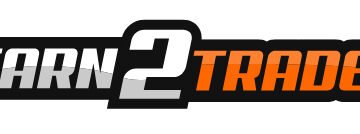Options trading can seem complex at first — expiration dates, strike prices, premiums, and leverage — but once you understand the fundamentals, it opens powerful opportunities to grow your trading account strategically. This complete step-by-step guide to options trading for beginners breaks everything down in plain English.
Whether you’re transitioning from futures day trading, stocks, or prop trading, this guide shows you how to approach options confidently — with smart strategies, examples, and professional insights.
🔹 What Is Options Trading?
In simple terms, an option is a financial contract that gives you the right, but not the obligation, to buy or sell a stock (or any underlying asset) at a specific price before a certain date.
Options are used by retail traders, hedge funds, and even prop firms to manage risk, hedge portfolios, or leverage market moves with smaller capital outlay.
Each option contract controls 100 shares of the underlying stock. That means a single option can amplify your exposure — both profits and losses — making it essential to understand how the mechanics work.
🏁 Step 1: Understanding Calls and Puts
All options fall into two main types:
1. Call Options (Bullish Bets)
A call option gives the buyer the right to buy a stock at a fixed price (called the strike price) before the contract expires.
If you believe a stock like Apple or Tesla will rise in price, you can buy a call option — profiting if the stock goes above your strike price before expiration.
Example:
If you buy a $150 call on Apple expiring in 30 days, and Apple climbs to $160, your call increases in value — even though you only paid a small premium upfront.
2. Put Options (Bearish Bets)
A put option gives the buyer the right to sell the underlying stock at a fixed price.
If you think a stock will drop, you can buy a put option — profiting as the stock moves below your strike price.
Example:
You buy a $100 put on Tesla. If Tesla drops to $90, your put becomes valuable because you can sell it higher than market value.
⚙️ Step 2: Key Terms You Must Know
Before placing your first trade, learn the building blocks of every option contract:
- Strike Price: The price at which you can buy or sell the underlying asset.
- Expiration Date: The date when the option contract ends.
- Premium: The cost to buy the option (paid by the buyer, collected by the seller).
- Intrinsic Value: The in-the-money portion of an option’s price.
- Time Value: The portion of the premium that depends on how long until expiration.
- Implied Volatility (IV): Market’s expectation of future price movement — a major factor in option pricing.
Understanding these terms will help you analyze option chains and select contracts with the best risk-reward ratio.
💡 Step 3: The Four Core Actions in Options Trading
Once you understand calls and puts, you can combine them in four key ways:
| Type | Market View | What You Get | Risk Level |
|---|---|---|---|
| Buy Call | Bullish | Right to buy at strike price | High risk, unlimited upside |
| Buy Put | Bearish | Right to sell at strike price | High risk, big downside |
| Sell Call | Bearish/Neutral | Obligation to sell | Limited profit (premium) |
| Sell Put | Bullish/Neutral | Obligation to buy | Limited profit (premium) |
These form the foundation for all strategies — from covered calls to credit spreads and LEAPS (long-term options).
💰 Step 4: Covered Calls – Earn Passive Income
Covered calls are one of the safest and easiest strategies for beginners.
If you already own at least 100 shares of a stock, you can sell (or “write”) a call option on those shares. You earn a premium upfront, and if the stock doesn’t rise above your strike price by expiration, you keep both the stock and the premium.
Why traders love it:
- Generates consistent cash flow, like collecting “dividends.”
- Works great for sideways markets.
- Keeps your stock portfolio active even when prices stall.
Example:
You own 100 shares of Apple at $150. You sell a $160 call expiring in 30 days for $3 per share.
You instantly collect $300 premium.
If Apple stays below $160, the option expires worthless — and you keep your $300 profit.
📉 Step 5: Selling Puts – Get Paid to Buy Stocks
Selling a put option lets you get paid to wait for your ideal entry price.
When you sell a put, you agree to buy the stock if it drops to your chosen strike price. In return, you collect a premium upfront.
Example:
You want to buy Nvidia at $400 but it’s trading at $440. You sell a $400 put and collect $500 in premium.
If Nvidia stays above $400, you keep the $500 — free money.
If it drops below $400, you’re required to buy at that price — which you already wanted.
This strategy is a favorite among professionals and even institutions looking to accumulate long-term holdings at better prices.
🚀 Step 6: LEAPS – Long-Term Options with Massive Leverage
LEAPS (Long-Term Equity Anticipation Securities) are simply options with expirations longer than one year.
They’re perfect for traders who want long-term exposure to a stock without spending huge capital.
Example:
Instead of paying $15,000 for 100 shares of Apple, you could buy a two-year call option controlling the same 100 shares for around $5,000.
That’s three times cheaper, and your potential upside mirrors the stock’s growth — but keep in mind, if the stock falls or stagnates, the option can expire worthless.
LEAPS combine leverage and time, making them ideal for traders who expect long-term growth but want to limit capital exposure.
🧩 Step 7: Risk Management in Options Trading
Options are powerful — but without risk control, they can burn through your account fast.
Professional traders follow a few golden rules:
- Never risk more than 2–3% of your account on one trade.
- Avoid near-term, out-of-the-money options unless you’re scalping volatility.
- Always know your break-even point before entering a trade.
- Use spreads to limit risk — for example, buying one option and selling another to offset cost.
- Trade with discipline — not emotion.
⚡ Bonus Tip for Prop Traders & Futures Day Traders
If you’re coming from futures or prop trading, options can complement your approach beautifully.
- Futures give you pure directional exposure.
- Options give you probabilistic edge — you can profit even when price goes sideways.
- Combine both to diversify your income streams and smooth your equity curve.
And if you’re looking to practice or scale your trading capital with professional funding — there’s no better time to take advantage of prop trading firm discounts below 👇
💥 Exclusive Prop Trading Deal for Traders
📢 80% OFF Apex Trader Funding Evaluations – Pass in 1 Day!
🚀 Apex Trader Funding is offering a LIFETIME 80% DISCOUNT on all evaluations!
💰 80% OFF ALL Evaluations & Future Months
💰 Pass in just 1 day
💰 $50 resets for ALL Evaluations
💰 $140 one-time PA activation fee
💰 Take unlimited evaluations – up to 20 funded accounts!
🔥 Apex has already paid out over $590 MILLION to traders!
🔹 Use Code: PROPDEALS at checkout
🔹 OR Click Here: https://tinyurl.com/ApexPropDeals
✅ Start Your Evaluation
✅ Save Now
✅ Get Your Discount
🎯 Final Thoughts
Options trading for beginners isn’t about gambling or guessing — it’s about strategy, discipline, and understanding probabilities.
Once you master how options move, you can:
- Generate monthly income from your portfolio
- Buy stocks at discounted prices
- Use leverage intelligently
- Hedge your positions during volatile markets
The goal isn’t to get rich overnight — it’s to trade smartly, protect your capital, and let your edge compound over time.
✅ Apex Trader Funding
- Options trading for beginners, step-by-step options trading, learn options, prop trading evaluation discount
- cheap futures prop firm evaluations, best prop trading firms for beginners, Apex Trader Funding discount
Ready to start trading like a pro?
👉 Get Your 80% Discount at Apex Trader Funding
and join thousands of traders already funded — Pass in 1 day, trade smart, and scale fast.






No Comments
Leave Comment